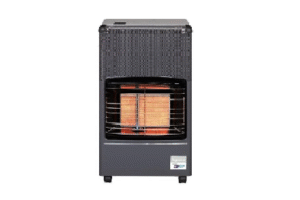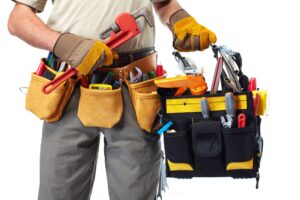There is one system in your vehicle that you trust, implicitly and completely, with your life and the lives of your family, every single time you drive. It’s not the engine. It’s not the air conditioning. It’s the braking system.
You are piloting a 2,000kg (or heavier) steel machine at 140 km/h, and you trust with a simple press of a pedal—that it will come to a safe, controlled, and immediate stop.
Because this system has always been so reliable, we’ve fallen into a dangerous trap: we think of it as a simple wear part. We believe a “brake job” is just “replacing the pads” when they start to squeal. We price-shop it, looking for the fastest, cheapest “special” we can find.
This is, without question, the deadliest gamble you can make in a modern vehicle.
Today’s brake system is not the simple, “dumb” hydraulic system of 20 years ago. It is a high-speed, networked, computerized vehicle-control system. It is an intricate web of mechanical components, hydraulic pressurized fluids, and sophisticated electronic sensors.
A “cheap” brake job from a non-specialist ignores 75% of this system. It is a “patch” that covers up the real problems—the invisible failures in the hydraulics and electronics—that are the true cause of brake failure. This is a technical guide to the system you think you know, and why a professional Brake System Service is the only one that can keep you safe.
Part 1: The Mechanical Core (What You Think You’re Paying For)
This is the part of the system everyone knows: the “wear items.” But even here, the difference between a “cheap” job and a professional one is massive, especially in the UAE’s high-heat environment.
1. The Brake Pads: More Than Just “Grip”
A brake pad is a high-tech friction composite. A cheap, 100-Dirham aftermarket pad is not the same as a 400-Dirham OEM-spec ceramic pad.
- The “Cheap” Pad Problem: A cheap, low-quality “organic” or “semi-metallic” pad, when subjected to the extreme heat of a UAE summer (stopping a heavy 4×4 from 140 km/h), will experience “Brake Fade.” The resin compounds in the pad boil and “glaze,” turning the pad’s surface into a slick, hard “rock.” You press the pedal, but the pad can no longer create friction. The car simply… doesn’t stop.
- The Specialist’s Approach: We use only OEM-spec or high-quality ceramic pads that are engineered for a high thermal threshold. They are designed to dissipate heat and provide consistent, predictable grip, from the first stop to the fiftieth.
2. The Brake Rotors: The “Heat Sinks”
The pads create friction; the rotors (the big metal discs) absorb and dissipate the resulting heat. Their one job is to get red-hot and cool down, over and over, without failing.
- The “Warped” Rotor: The most common brake complaint is a “shudder” or “shake” in the steering wheel when you brake from high speed. This is a “warped” rotor. The intense heat, combined with poor-quality metal, has caused the disc to distort.
- The “Cheap” Job vs. The Professional:
- A “cheap” shop will ignore a minor warp, just “slapping” new pads on it. This will destroy the new pads in a few thousand kilometers.
- A “better” shop might “resurface” (machine) the rotor. This is a risky gamble in the UAE. It makes the rotor thinner, reducing its ability to absorb heat, and making it far more likely to warp or even crack under stress.
- A Specialist uses a micrometer to measure the rotor’s exact thickness. We compare this to the manufacturer’s “minimum legal thickness.” If it’s too thin to be safe, we replace it. This is a safety-critical, non-negotiable decision.
3. The Caliper: The “Forgotten” Component
The caliper is the hydraulic “claw” that squeezes the pads against the rotor. This is where 90% of “cheap” brake jobs fail.
- The Problem: The Seized Pin: A caliper must “float” side-to-side on a set of “guide pins.” These pins live in a horrible environment of sand, water, and brake dust. They rust and seize. The caliper can no longer “float.” It gets stuck.
- The “Cheap” Fix: A “pad-slapper” will use a pry bar to force the old pads out and jam the new ones in. They never service the seized caliper.
- The Result (A Double-Failure):
- Safety: The caliper is now “dragging.” One brake pad is constantly applied, overheating, and wearing out at 10x the normal rate.
- Financial: This “brake drag” is like driving with your foot on the brake. It murders your Fuel Economy, costing you hundreds of Dirhams at the pump.
- The Specialist’s Approach: A professional Brake System Service is not complete until the caliper is fully serviced. We disassemble the caliper, remove the guide pins, clean all rust and debris, and lubricate them with high-temperature ceramic grease. This ensures the caliper “floats” perfectly and releases fully, saving your pads, your rotors, and your fuel.
Part 2: The Hydraulic “Nervous System” (The Most Common Invisible Failure)
This is the part of the system that “cheap” shops never touch, and it is the single most likely reason your brakes will fail in an emergency.
The Problem: Your Brake Fluid is “Hygroscopic.” This is a scientific term meaning it is designed to absorb water (humidity) from the air. In a coastal, high-humidity climate like Sharjah or Dubai, your brake fluid is actively sucking water from the atmosphere right now, through microscopic pores in the rubber hoses.
This absorbed water causes two separate, catastrophic failures:
1. The “Slow Death” (The Financial Killer)
Water is heavier than brake fluid. It sinks to the lowest points of the system: your four brake calipers and (in older cars) wheel cylinders. What happens when you combine water, steel (your caliper pistons), and air? RUST.
Your brake system is rusting from the inside out. The calipers seize, the pistons jam, and the steel brake lines corrode. One day, you’ll be told you need a 4,000 AED “full brake rebuild.” This was not a “bad luck” failure. This was a 100% preventable failure caused by three years of neglecting a 300-Dirham brake fluid flush.
2. The “Fast Death” (The Safety Killer)
This is the one that should keep you up at night. This is “Vapor-Lock Brake Failure.”
- Fact 1: Your brake fluid is designed to have a high boiling point (e.g., 230°C / 446°F).
- Fact 2: The water your fluid has absorbed boils at 100°C / 212°F.
- Fact 3: In an emergency stop, or even just driving down a long, steep hill (like Jebel Jais or Jebel Hafeet), your calipers and fluid can easily exceed 100°C.
The Catastrophe: The instant the fluid hits 100°C, the water in it flashes into STEAM (a gas). Your brakes work because you cannot compress a liquid. But you can compress a gas.
You slam your foot on the brake pedal. Your foot goes straight to the floor with zero resistance. You are compressing steam. You have no brakes. This is not a “fade”; this is a total, terrifying, and complete system failure.
The Specialist’s Approach: We never guess. A professional Brake System Service includes using a digital brake fluid tester. This tool measures the exact moisture content or boiling point of your fluid. The moment it fails the test (typically >3% water), we recommend a full Brake Fluid Flush, pushing 100% of the old, wet, corrosive fluid out and replacing it with 100% new, clean, dry fluid. This isn’t an “upsell”; it’s the most critical safety service we offer.
Part 3: The Electronic Brain (Why Your Brakes Are an IT Problem)
This is the 75% of the system that “pad-slappers” don’t even know exists. Your brake pedal is no longer just a hydraulic switch. It’s an input to a computer.
The Evolution:
- ABS (Anti-lock Braking System): Stops your wheels from locking up, so you can steer while braking.
- EBD (Electronic Brakeforce Distribution): Intelligently sends more brake power to the rear wheels when your trunk is full, or less when it’s just you, to stop you in the shortest, straightest line.
- TC (Traction Control): When a wheel spins (on sand or water), the system autonomously applies the brake to that one wheel to send power to the wheel that has grip.
- ESP (Electronic Stability Program): The lifesaver. When your car “skids” or “fishtails” in a corner, the ESP computer instantly and autonomously applies the brake to one single, specific wheel (e.g., the “outer front”) to pull the car straight before you even realize you are skidding.
The Problem: This is an IT System. This entire “Vehicle Stability Control” system relies on a network of sensors, all of which must be perfect.
- Wheel Speed Sensors: One on each wheel, living in a brutal world of sand, 50°C heat, and water.
- Steering Angle Sensor: In your steering column, telling the computer where you want to go.
- Yaw & G-Force Sensors: In the center of the car, telling the computer where the car is actually going.
The “Ghost” Failure: An “ABS,” “BRAKE,” or “ESP/DSC” light on your dashboard is not a mechanical problem. It is an electronic fault. It means a sensor is dead, the wiring is corroded, or the high-tech, 6,000-Dirham ABS computer module has failed.
The Specialist’s Approach: A generic mechanic with a wrench is lost. They will just start guessing, replacing your most expensive parts one by one.
This is a job for Advanced Diagnostics & Electrical Services. We plug in a manufacturer-level scan tool to “talk” to the ABS module. The code (e.g., “C1101: Right Front Wheel Speed Sensor Signal Erratic”) tells us where to look. Then, we use a tool like an oscilloscope to graph the live signal from that sensor. This allows us to see, with 100% certainty, if the problem is the 300-Dirham sensor, the 50-Dirham wiring, or the 6,000-Dirham module.
We diagnose the problem, we don’t guess. This is the only way to safely and affordably repair a modern, high-tech braking system.
Conclusion: You Have One Choice to Make—Cheap, or Safe?
Your car’s brake system is a perfect triangle of Mechanical grip, Hydraulic power, and Electronic intelligence. A failure in any one of these three areas results in a total system failure.
The “cheap” 150-Dirham brake special is a dangerous illusion. It only touches one small corner of the mechanical system. It ignores the seized calipers. It completely ignores the water-logged, corrosive hydraulic fluid. And it has zero capability to diagnose the complex electronic brain.
A professional Brake System Service is a holistic, safety-critical procedure. It is a guarantee that all three sides of the triangle have been inspected, serviced, and restored by an expert technician.
When you are on the E11 in rush hour and the car in front of you panic-stops, the difference between a “cheap” job and a professional one is the difference between stopping safely and being in a catastrophic accident. Your family’s safety is riding on this. Do not gamble it on a “special.”


